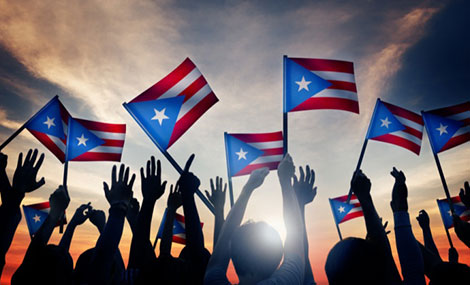Community Digital Centers/Hubs
and Resilient Digital Solutions

One-Stop, Community Hub, Resource, Welcoming center
- In the wake of Hurricanes Irma and Maria it became apparent that there is a critical need for connectivity at the local level. The barrios and municipalities that were furthest away from the staging areas for support were left without communications capabilities. The lack of communications in turn prevented emergency officials from being able to gauge the extent of the damage in those regions, which were also the communities that disproportionately contributed the most fatalities. It was in these barrios and municipalities that we saw inordinate delays in restoring basic resources, including connectivity to either mobile or wireline communications.
- An inexpensive solution needs to be established prior to the next catastrophe such as VSAT satellite communications systems. Much in the way that mobile carriers ought to prepare before a hurricane through the dispersal of equipment and supplies necessary for restoration activities, we propose to place VSAT systems throughout these municipalities to ensure that an emergency communications network is online immediately after the natural disaster. Further, this connectivity through the CPR Network will be based on a technology that is not affected by the Caribbean’s atmospheric conditions.
- Satellite was the only reliable communications system in the aftermath of the hurricanes and should be fully implemented across the islands, especially in rural and mountainous areas in order to build a truly resilient and connected Puerto Rico and U.S. Virgin Islands. The importance of a community-based solution also became apparent as weeks and months passed with delays in restoring communications. The impact was felt by more than emergency services personnel and first responders, it impacted everything from the ability of individuals to access their bank accounts or withdraw funds from ATMs, doctors and pharmacists filling prescriptions, and many other critical sectors.
CPR COLLABORATION WITH THE DIASPORA AND PUERTO RICO

LEVERAGING THE PUERTO RICAN DIASPORA
The emergency preparedness and response plan for Puerto Rico can include community centers from the Diaspora. There are over 9 million Puerto Ricans in the world. Six million are in the Diaspora. The Diaspora is an important source of economic sustainability. Linking them with the hubs will foster long-term economic development and relationships.
Work in the Diaspora
For the last couple of years, CPR has been in conversations with community leaders, appointed and elected officials of the Diaspora. In addition, it has engaged universities in New York that specializes in emergency preparedness and in Connecticut. It has active communications and collaborations with major organizations that represent the Puerto Rican community nationwide.
Resilient Communications with the Diaspora:
- Provide the Diaspora with the ability in an emergency to communicate with relatives and send aid to PR, in a timely and cost-effective manner.
- Reduce cost to government agencies to absorb the sudden migration of Puerto Ricans following disasters in PR to those states.
Aspects of the CPR Satellite Network
The CPR network started to provide highly specialized training in the use of satellite communications technology following guidelines provided by the Global VSAT Forum, Geeks Without Frontier and the UN’s Emergency Telecommunications Cluster. Participants will be trained by skilled personnel that will assist in developing emergency protocols to protect the equipment during the emergency, to insure connectivity and analyze and provide assessment reports after an incident.
- The CPR model will equip Puerto Rico and its key emergency players to respond to future disasters in timely and efficient manner, ensuring that never again are our communities will be cut off from the rest of the island and the world for months.
- The CPR model is the most cost-effective and timely solution for sustaining collaborative communications network in case of any emergency and presents some very exciting possibilities for collaboration between and within sectors.
- CPR addresses each individual participant sector’s specific emergency communications needs and serves as space for all sectors to discuss and recommend protocols and procedures to be implemented in an emergency event in order to coordinate an effective and efficient response.
Description of a CPR site
All CPR members will be connected to a designated area with the capacity to receive and transmit crucial information for recovery efforts in case of an emergency. In order to insure this capacity, each member of the CPR network will constitute a Center for Preparedness and Response equipped with:
- A VSAT satellite terminal
- Alternative energy (solar/turbine)
- Video conferencing facility for training
- Water filtering capability
- Local community internet distribution
- WiFi Hotspots
- Computers





